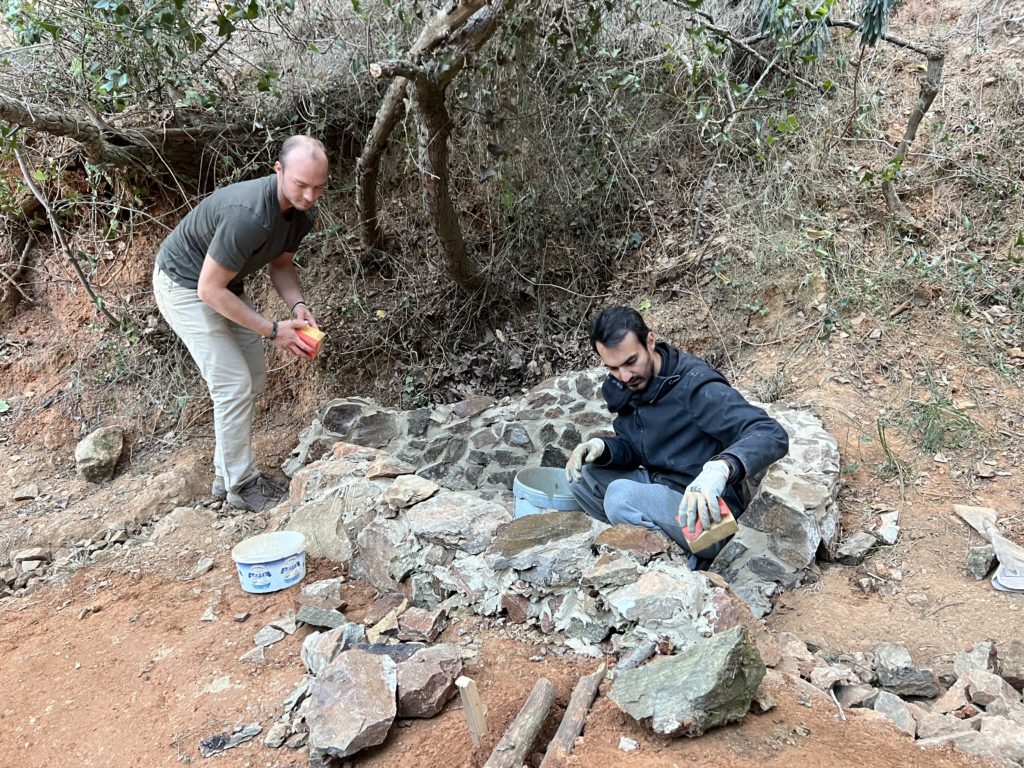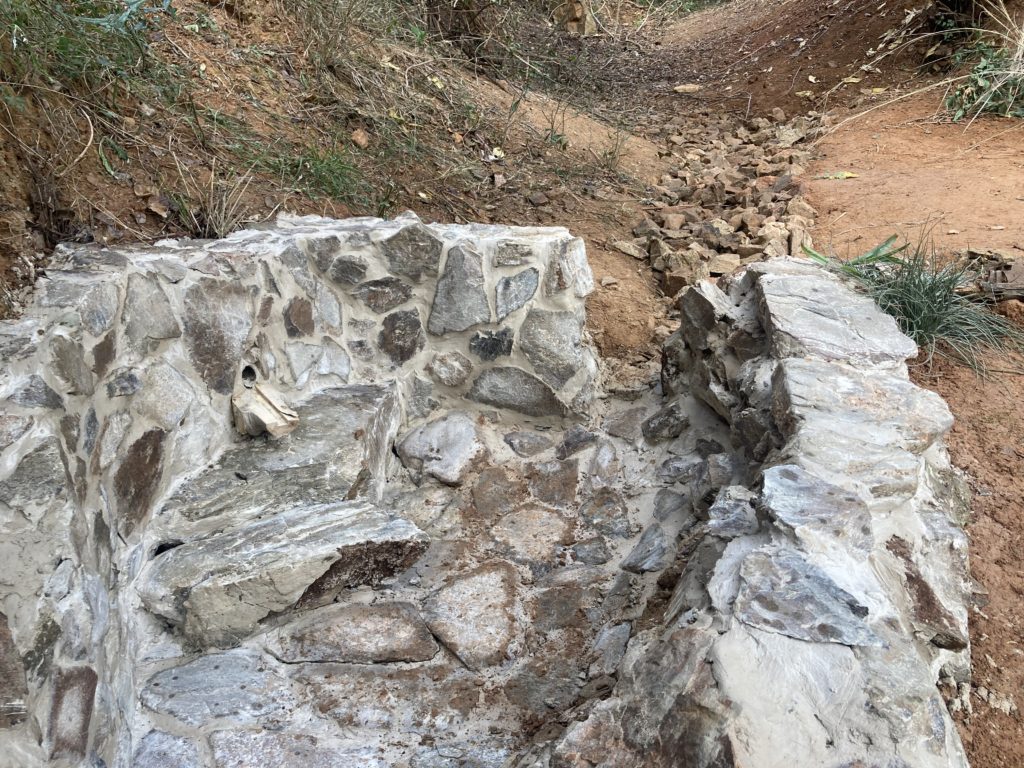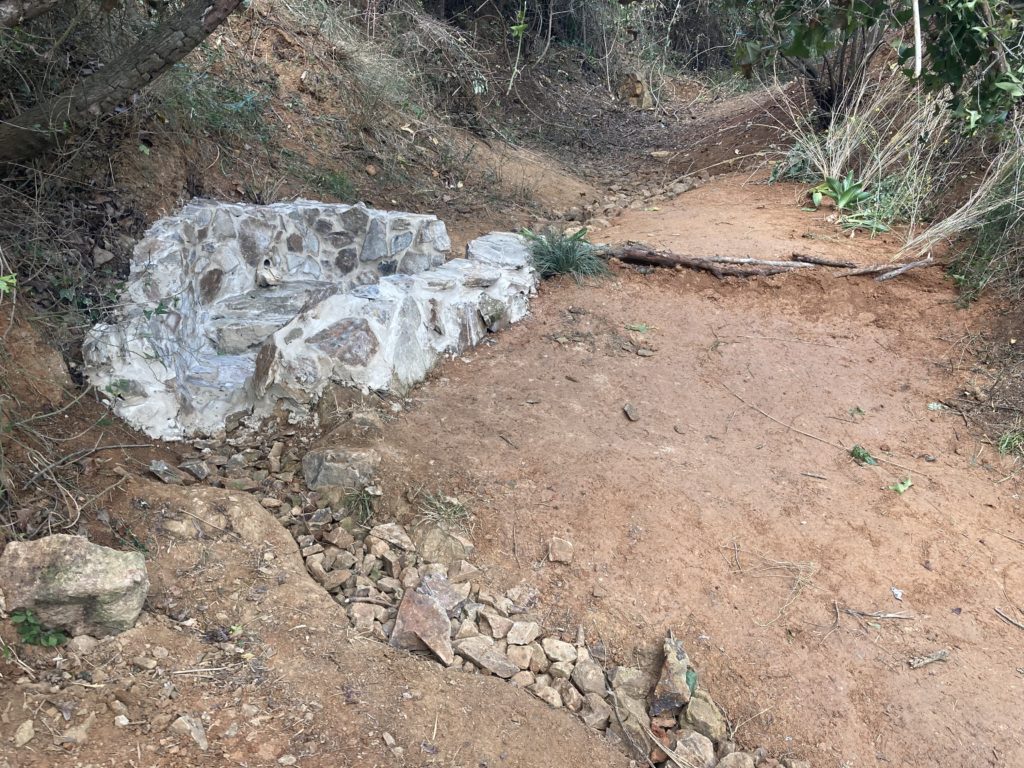In designing and fabricating the fountain arrangement of the Open Nature project, we explored various prototypes. First, we built a small waterway in the garden space at Valldaura Labs to brainstorm how to capture the water in an elegant way. This helped us understand basic grading methods to let the water drain appropriately.
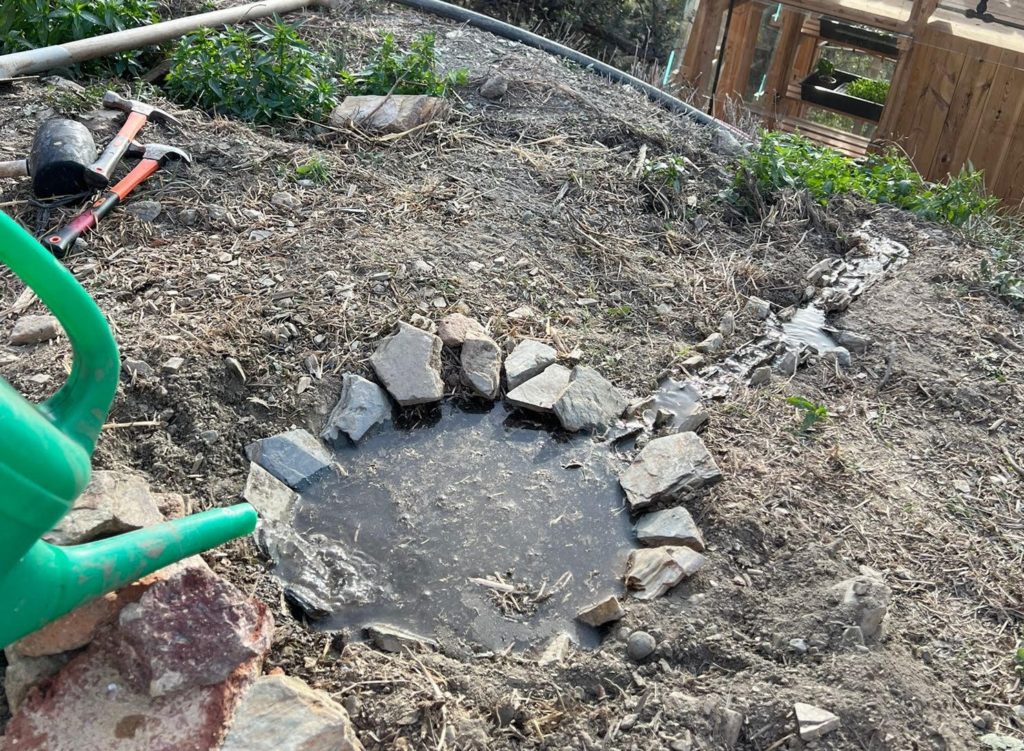
Next, we focused on the water source for the fountain: the spout. After researching other fountain designs and drawing inspiration from Japanese ways, we experimented with wooden spouts. The material was found from offcuts of MAEBB timber processing from prior years – from both Fig and Pine trees. To make these spouts, we first cut branches cut to the desired length using the Miter Saw. Next, the pieces were sliced in half using the Table Saw. Next, to create a channel for the water, we built a jig for the router to act be a fence guide and create a straight cut. This technique was advanced using a curved fence-jig, yet we found the process to be dangerous in moving the router various directions. Finally, the insert in the wood was sanded and chiseled to desired finish state.
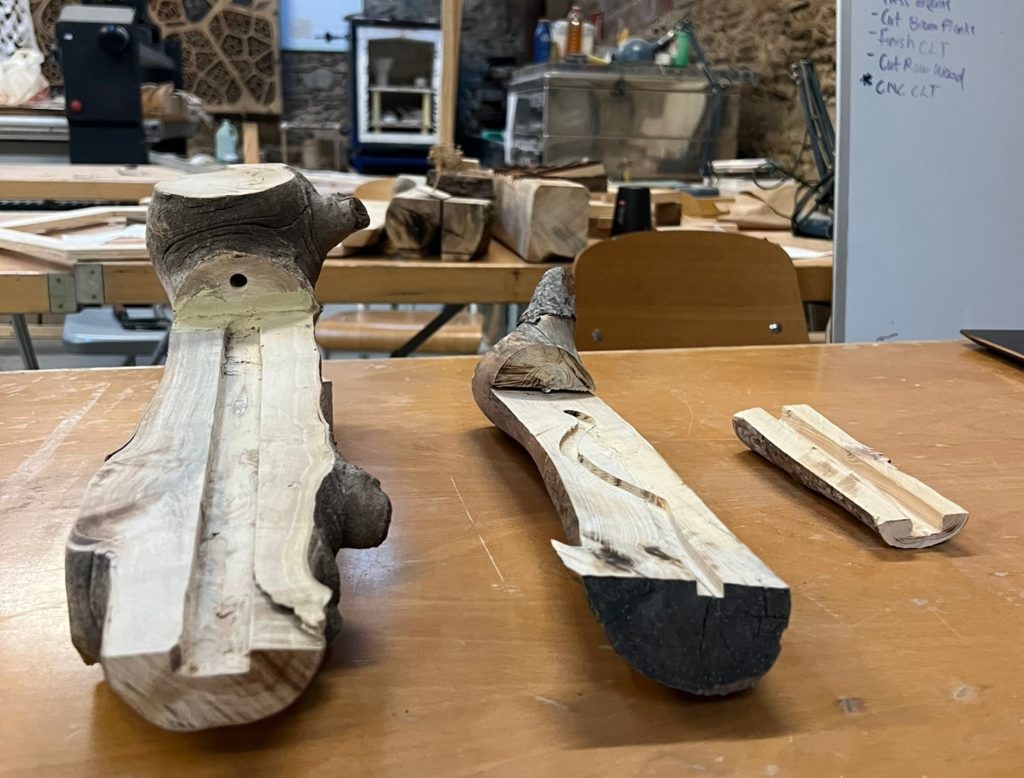
Working closely with the rammed earth team led us to experimenting with the capability for rammed earth to hold and transmit water. As the two projects were located on the same site, we initially thought to use rammed earth as the main material for the fountain. Although the final design went a different direction, we were able to learn carving and simple tiling techniques with our rammed earth prototypes.
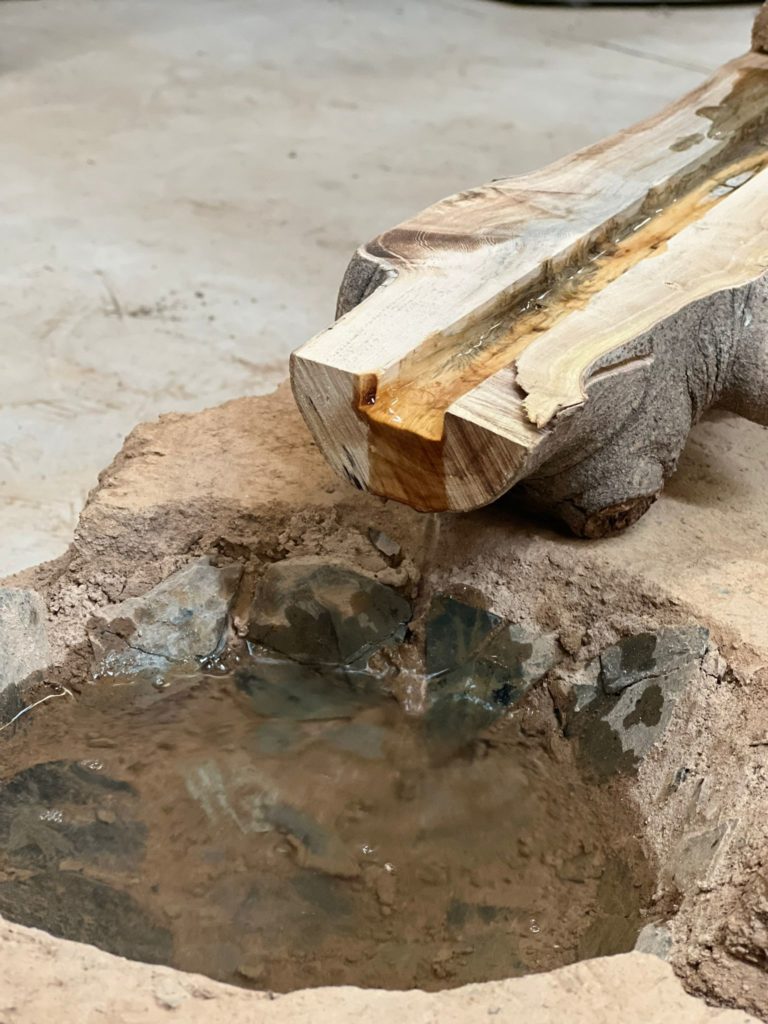
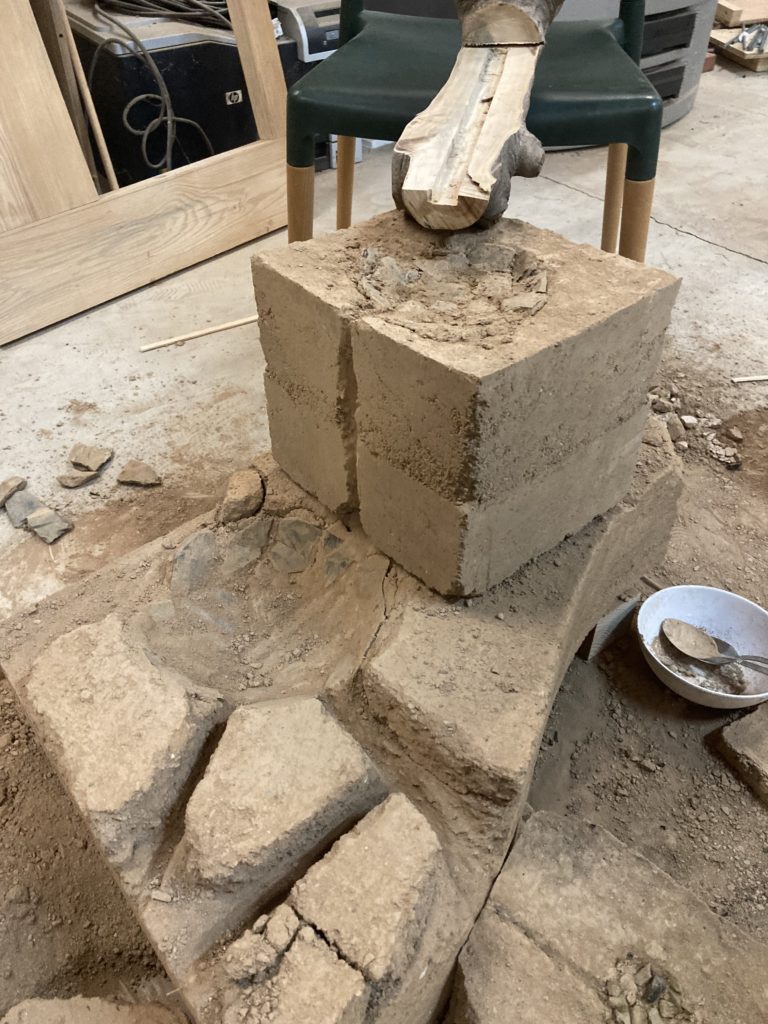
As our design progressed, we planned to use stones from site to make up the collection basin at the fountain location. We tried several stone arrangements, both on site and in the fab lab to analyze the aesthetic qualities and continue advancing the design towards final installation. Our findings were that larger stones were more aesthetically pleasing for the fountain users, so we focused towards collection of large, flat stones.
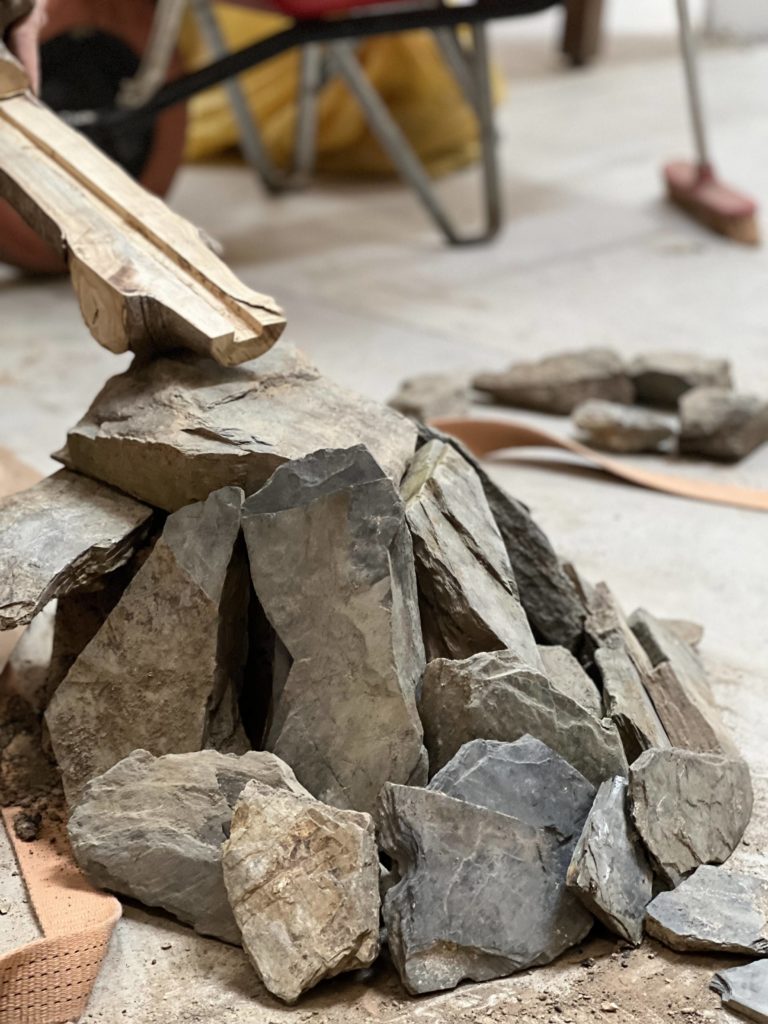
As we continued to clean up the Font Del Goss site during installation week, former waterways were uncovered. These had been slowly carved into the earth over many years. While excavating the fountain basin, we dug out the waterways to create a smooth transition in and out of the main collection point. Filling the streambeds with rocks would work in conjunction with the team boosting the biodiversity by slowing the water down and allowing it to be absorbed into the dry clay soil. Over time, we hope this water catchment will help plants and animals on the fray of the forest thrive.
For the final installation, large stones were placed under the wooden spout in a cascading manner. Next, large flat stones were hand-placed one by one to ensure minimization of gaps in between stones. After dry-setting the arrangement, we worked with a local mason to fix in place. We used limestone (cal) leftover from the rammed earth mixture and water to be the binding agent for the local stones. During this, we learned how to mix the grout, apply it, and wash the stones at the end. After 24 hours, the fountain arrangement had hardened to its final state.

